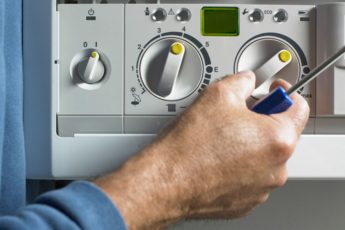
Did you know that damp is the most frequent problem encountered in homes in the UK? With around 150,000 gallons of rainwater falling annually, this should come as no surprise. Damp can be very bad for your personal health, as well as the health of your home.
The first step to damp proofing your home is to identify the type of damp you’re experiencing:
• Condensation
• Rising damp
• Penetrating damp
Each will need to be dealt with differently. Of course, if you take steps to damp proof your home now, you will never need to deal with damp problems again!
What is Damp Proofing?
This important step of damp proofing is the preventing of moisture decay in your home. It’s a long-term solution and should be carried out by a qualified damp proofing expert. It will prevent water and moisture passing through your walls and roof into your home, therefore preventing damage to the structure of the building, such as wet rot, rising damp and dry rot. Most buildings nowadays are constructed with a layer of damp proofing already installed in the walls. However, if you see signs of damp appearing in your property, you should always call a specialist to investigate further.
Effects on Health
Damp in your home can have many effects on your health, ranging from minor inconveniences to serious ailments. Mould loves to grow in damp spaces and the spores from mould can cause a range of symptoms, including respiratory problems, nasty coughs, eye infections, sore nose and throat, asthma, tiredness and headaches. If you spot any black patches on your walls – it’s mould! You should always call a specialist to clean it and make sure it doesn’t recur and get the damp in your home checked out by a damp proofing contractor.
For children and elderly people, or those with respiratory conditions such as asthma, damp can be particularly dangerous, leading to chest infections, wheezing coughs and worsening asthma symptoms. Bear in mind that if you live in an old house, which has asbestos foundations, rising damp can lift asbestos particles with it, causing you to breathe them in from the atmosphere. Legionnaire’s disease and pneumonia are other common illnesses caused by damp.
Is Damp Proofing Necessary?
A qualified expert will be able to carry out a survey and tell you if your home is suffering from damp of any kind. When installing a new course of damp proofing, it usually comes with a 20 year guarantee, so whilst you’re spending quite a bit of money, you can rest safe in the knowledge that your home will be protected from damp, whatever the weather! Look for a damp proofing company that can offer a range of services. For example, some companies offer cellar waterproofing and treatments for dry rot and woodworm if your property has been damaged by damp. Damp proofing your home is important to ensure you and your family stays healthy. By ignoring damp conditions, you are risking a range of symptoms and illnesses.



